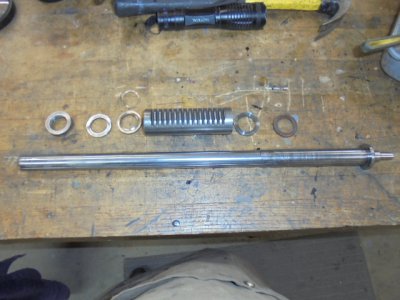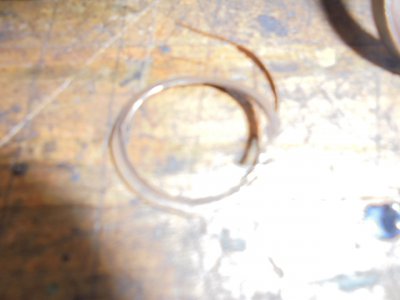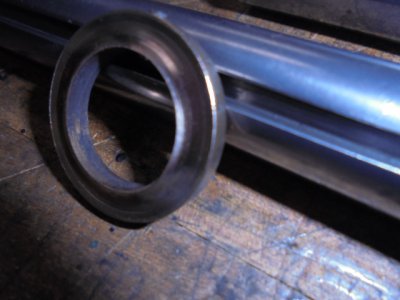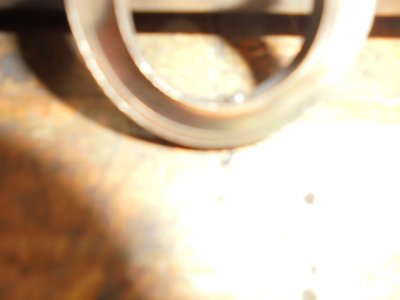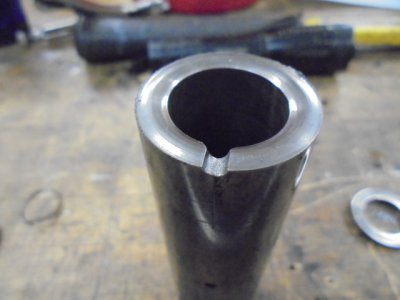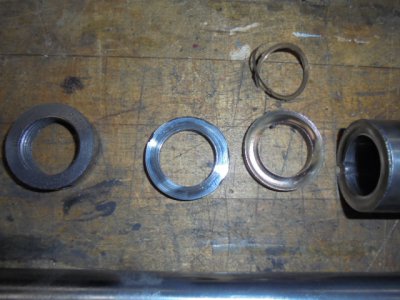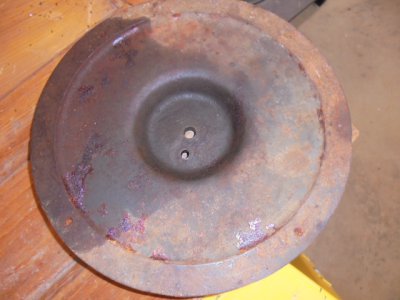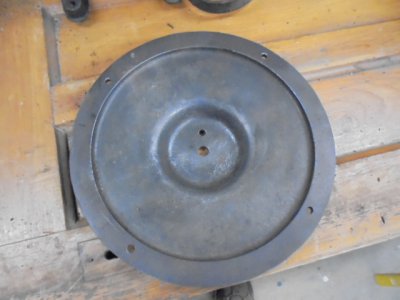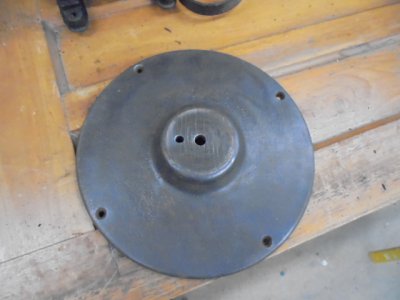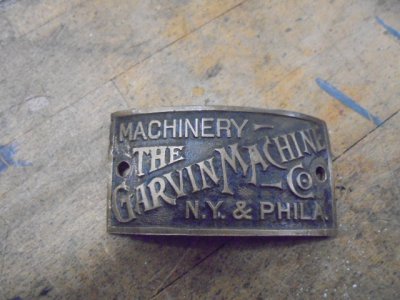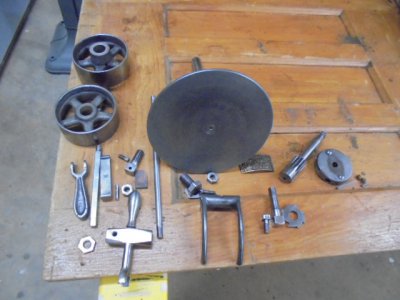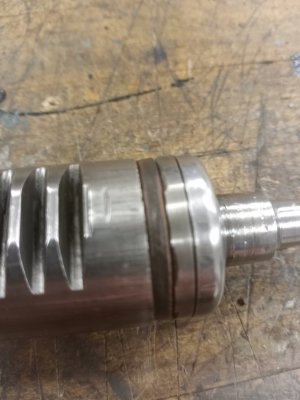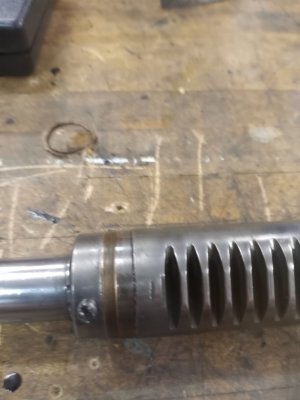The machine is a small bench top drill press manufactured by WF & John Barnes. The machine appears in the 1898 Metal Working Machinery catalog on Vintage Machinery (no other metal tools catalogs are available so I'm not sure how long this machine was offered. I have not found any other mention of it anywhere. Here's a link to the catalog - the machine appears on page 2. http://www.vintagemachinery.org/pubs/73/15144.pdf
It is called a Bench Friction Disk Drill. It has a wheel on the spindle that rides against a disk, which is powered through a flat belt pulley system. Moving the spindle wheel's position on the disc increases/decreases the spindle speed from 0 to 1650 rpm. Column to spindle is 4-1/4" so it would be considered an 8-1/2" drill by normal standards. It 33" tall, has a spindle movement of about 3" and weighs 65#. It came to me powered by a 1/4 HP, 1725 RPM single phase (I think) Western Electric motor. I thought I'd at least get the disassembly started today. After about 1-1/2 hours I was done.
I'm having some trouble understanding the spindle assembly and was wondering if anyone has ever worked on this or a similar machine that could suggest just how the spindle and quill went together. Here's a few pictures of the machine as received
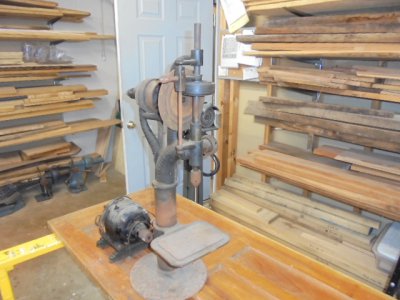
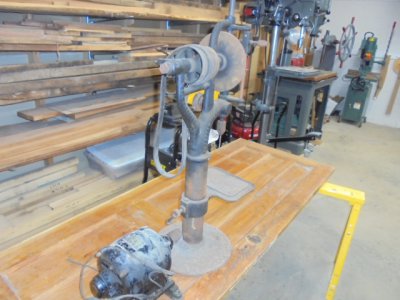
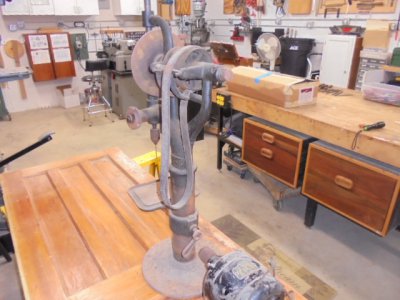
It is called a Bench Friction Disk Drill. It has a wheel on the spindle that rides against a disk, which is powered through a flat belt pulley system. Moving the spindle wheel's position on the disc increases/decreases the spindle speed from 0 to 1650 rpm. Column to spindle is 4-1/4" so it would be considered an 8-1/2" drill by normal standards. It 33" tall, has a spindle movement of about 3" and weighs 65#. It came to me powered by a 1/4 HP, 1725 RPM single phase (I think) Western Electric motor. I thought I'd at least get the disassembly started today. After about 1-1/2 hours I was done.
I'm having some trouble understanding the spindle assembly and was wondering if anyone has ever worked on this or a similar machine that could suggest just how the spindle and quill went together. Here's a few pictures of the machine as received




